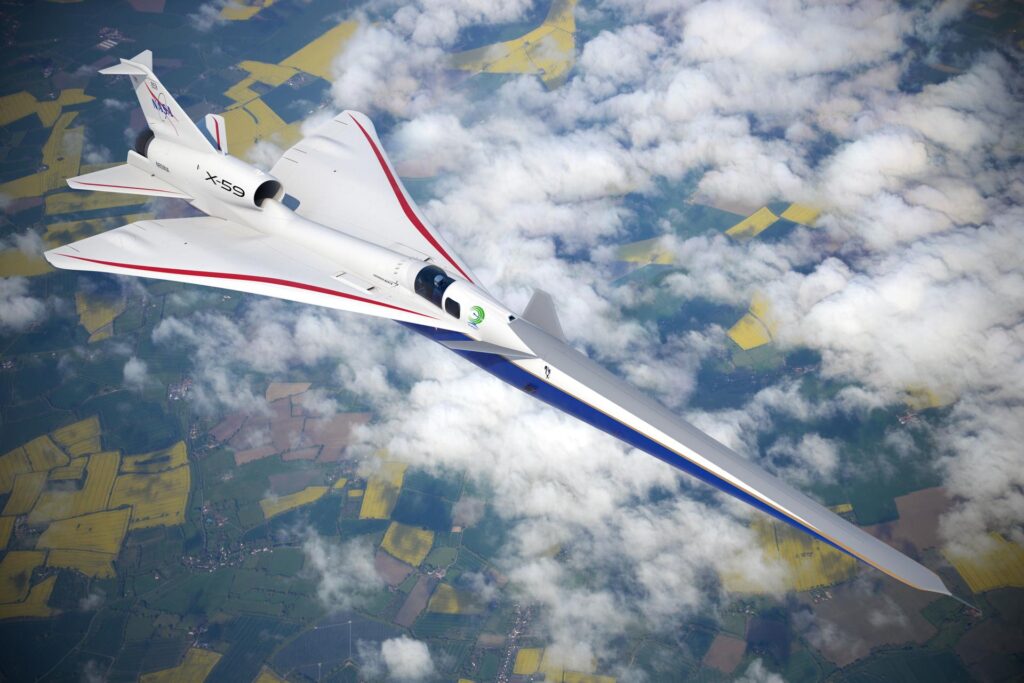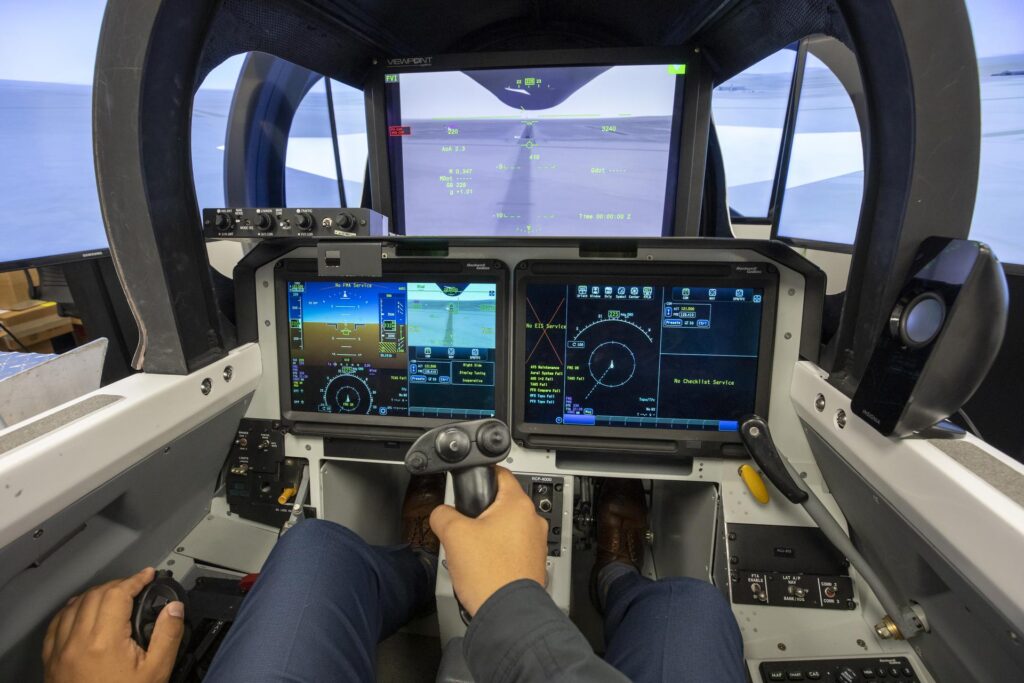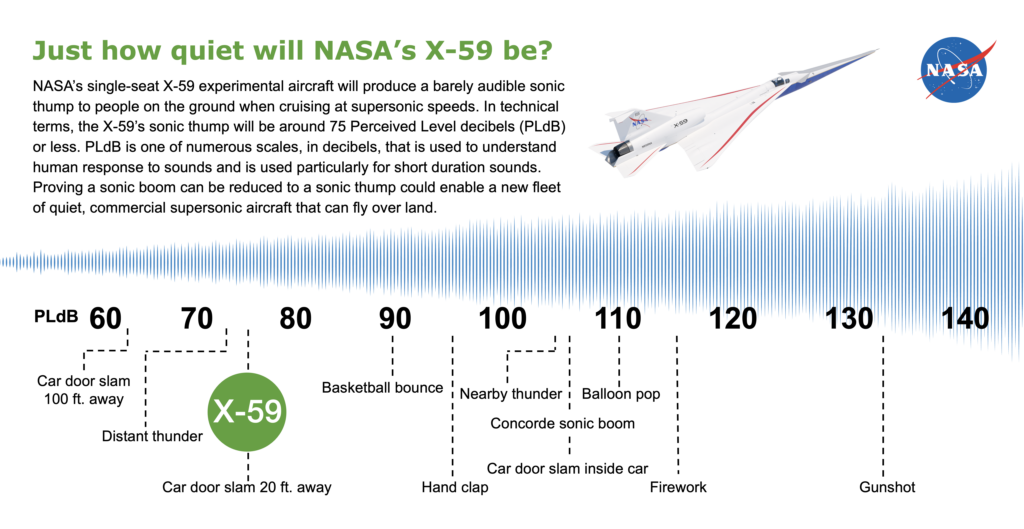NASA Aerospace Engineer Talks Supersonic Flight


NASA’s Quesst mission is designing and building a research aircraft, the X-59, to make commercial supersonic travel over land possible again. Pictured above is the cockpit view of the external vision system that will be placed in the X-59. (Photo: Lockheed Martin/Garry Tice)
The FAA banned civilian supersonic travel over land in 1973. NASA’s Quesst mission is designing and building a research aircraft, the X-59, utilizing technology to reduce its noise and to help make commercial supersonic travel over land possible again. The team plans to fly the aircraft over various populated areas in the U.S. to collect data, which may be used to write new sound-based rules for supersonic flight over land.
The Quesst mission kicked off with the first phase, aircraft development, in 2018, which will continue until 2024. Phase two includes acoustic validation, and NASA’s team will conduct its community response study—phase three—in 2025 and 2026. Finally, the Quesst mission will share a complete analysis of the community response data with regulators.
The X-1 airplane was the first to fly faster than the speed of sound in 1947. The U.S.’s supersonic transport (SST) program was canceled in 1971, but the Concorde—developed by the UK and France—made supersonic flights across the Atlantic Ocean with passengers up until 2003, when the model was retired.
Avionics International recently caught up with Edward Haering, Aerospace Engineer at the NASA Armstrong Flight Research Center in the Research Aerodynamics and Propulsion Branch, to learn more about the Quesst mission. He shared that they intend to fly the X-59 for the first time this year, and they will spend roughly nine months testing out all of the systems to ensure its safety.

An illustration of the X-59 (Photo: Lockheed Martin)
“Every time you have a change in lift or change of volume with a supersonic plane, the wings and the canopy and the tail produce a shockwave,” he explained. “These individual shocks tend to combine with each other, get stronger, and combine into one strong shock at the front and one strong shock at the back.”
The Quesst mission involves working on the X-59 experimental aircraft to keep the individual shocks separated and to prevent them from combining. Ideally, the only sound produced should be a low thud—”kind of like your neighbor across the street slamming their car door,” Haering said. “If you were listening for it, you’d probably hear it, but if you’re doing something else, you may not even notice it.”
The X-59 is the first aircraft where researchers are attempting to keep all of the shockwaves on the plane separated—from the tip of the nose to the end of the tail.
The biggest challenge for the Quesst mission is getting the shape of the plane right. The nose needs to be very sleek, Haering shared, and they want to avoid bumps in the fuselage.
The team is also doing a lot of preparation to make sure that the plane flies safely. Lockheed Martin, who was selected to complete the preliminary design of a demonstrator aircraft in 2016, is designing the X-59 to ensure its safety before transferring it to NASA.
The X-59 has an external vision system, developed by Core Avionics & Industrial, that relies on small cameras and projects onto high-resolution screens. The pilot will use these monitors for forward-facing visibility instead of a front-facing window. “Our pilots say that they see just as well, if not better, with the 4K monitor,” a NASA representative noted.
“We will be doing all kinds of testing, taking pressure measurements very close to the plane and all the way down to the ground to make sure it’s as quiet as we think it’s going to be,” explained Ed Haering.
“Once we prove that it is quiet enough, then we plan to fly over communities,” he said. They will perform flights that produce sounds both louder and softer than the target to see how people respond.

(Photo: NASA)
The target is 75 decibels perceived level, which takes into account the response of the human ear, and other noise metrics will also be computed, Haering shared. That data will then be presented to the FAA and to ICAO. This research will help these organizations to decide what threshold is appropriate.
Allowing supersonic travel over land opens up significant economic opportunity, he said. “Once the rule is changed, aerospace companies could design planes below that level and know that they can fly legally and not disturb a lot of people.”
The post NASA Aerospace Engineer Talks Supersonic Flight appeared first on Avionics International.
—————
Boost Internet Speed–
Free Business Hosting–
Free Email Account–
Dropcatch–
Free Secure Email–
Secure Email–
Cheap VOIP Calls–
Free Hosting–
Boost Inflight Wifi–
Premium Domains–
Free Domains





